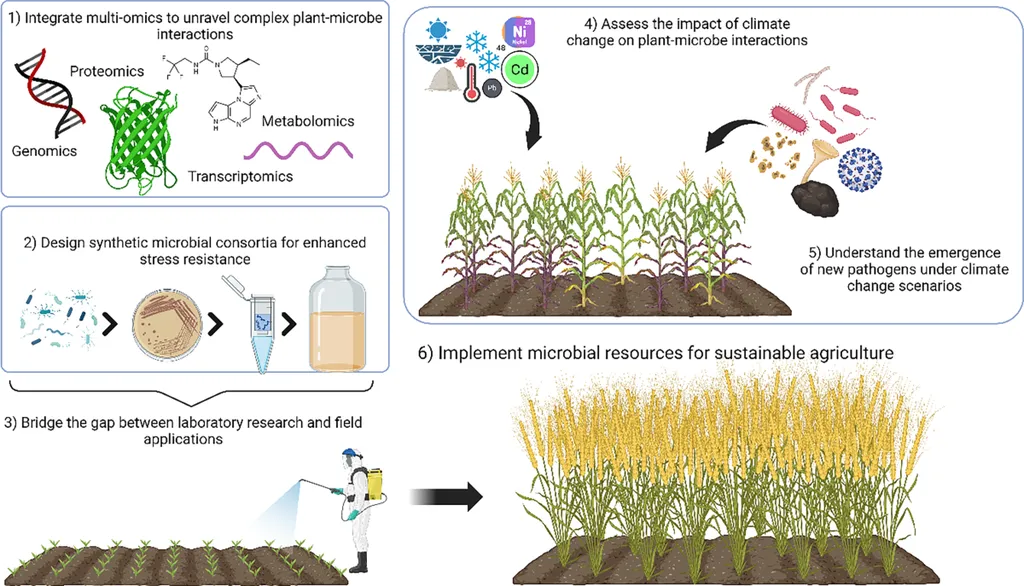In the face of a changing climate, scientists are turning to the intricate world of plant-microbe interactions to bolster sustainable agriculture, particularly in arid regions. A recent editorial published in *Frontiers in Microbiology* (which translates to *Frontiers in Microbiology* in English) sheds light on the potential of these interactions to revolutionize farming practices and offer new opportunities for the energy sector.
Camilla Fagorzi, a researcher from the Department of Biology at the University of Florence, Italy, leads this exploration into the symbiotic relationships between plants and microbes. Her work highlights how these interactions can enhance plant resilience, improve soil health, and ultimately contribute to more sustainable agricultural systems.
“Plant-microbe interactions are a cornerstone of ecosystem functioning,” Fagorzi explains. “By harnessing these natural partnerships, we can develop innovative strategies to support agriculture in challenging environments.”
One of the key areas of focus is the use of bacterial inocula, which involve introducing beneficial bacteria to plants to boost their growth and stress tolerance. This approach has shown promise in enhancing crop yields and reducing the need for chemical fertilizers, which can be both environmentally damaging and costly.
Another promising technique is biopriming, a process that involves treating seeds with beneficial microbes before planting. This method not only improves seed germination and plant growth but also enhances the plant’s ability to withstand environmental stresses, such as drought and salinity.
The implications for the energy sector are significant. Sustainable agriculture practices can reduce the environmental footprint of bioenergy production, making it a more viable and eco-friendly option. By improving crop yields and resilience, these techniques can also enhance the productivity of energy crops, which are plants grown specifically for their energy content.
Fagorzi’s research suggests that these methods could be particularly beneficial in arid regions, where water scarcity and poor soil conditions pose significant challenges to agriculture. “In these areas, every drop of water and every nutrient in the soil is precious,” she notes. “By leveraging plant-microbe interactions, we can make the most of these limited resources.”
The editorial calls for increased investment and research into these areas to fully realize their potential. As climate change continues to impact agricultural practices worldwide, the insights gained from studying plant-microbe interactions could be crucial in developing sustainable solutions.
This research not only offers a glimpse into the future of agriculture but also underscores the importance of interdisciplinary collaboration. By bringing together experts from various fields, we can tackle the complex challenges posed by climate change and pave the way for a more sustainable future.
As Fagorzi and her colleagues continue to explore these interactions, the agricultural and energy sectors alike stand to benefit from the innovative strategies that emerge. The journey towards sustainable agriculture is fraught with challenges, but with the power of plant-microbe interactions, the path forward looks increasingly promising.

